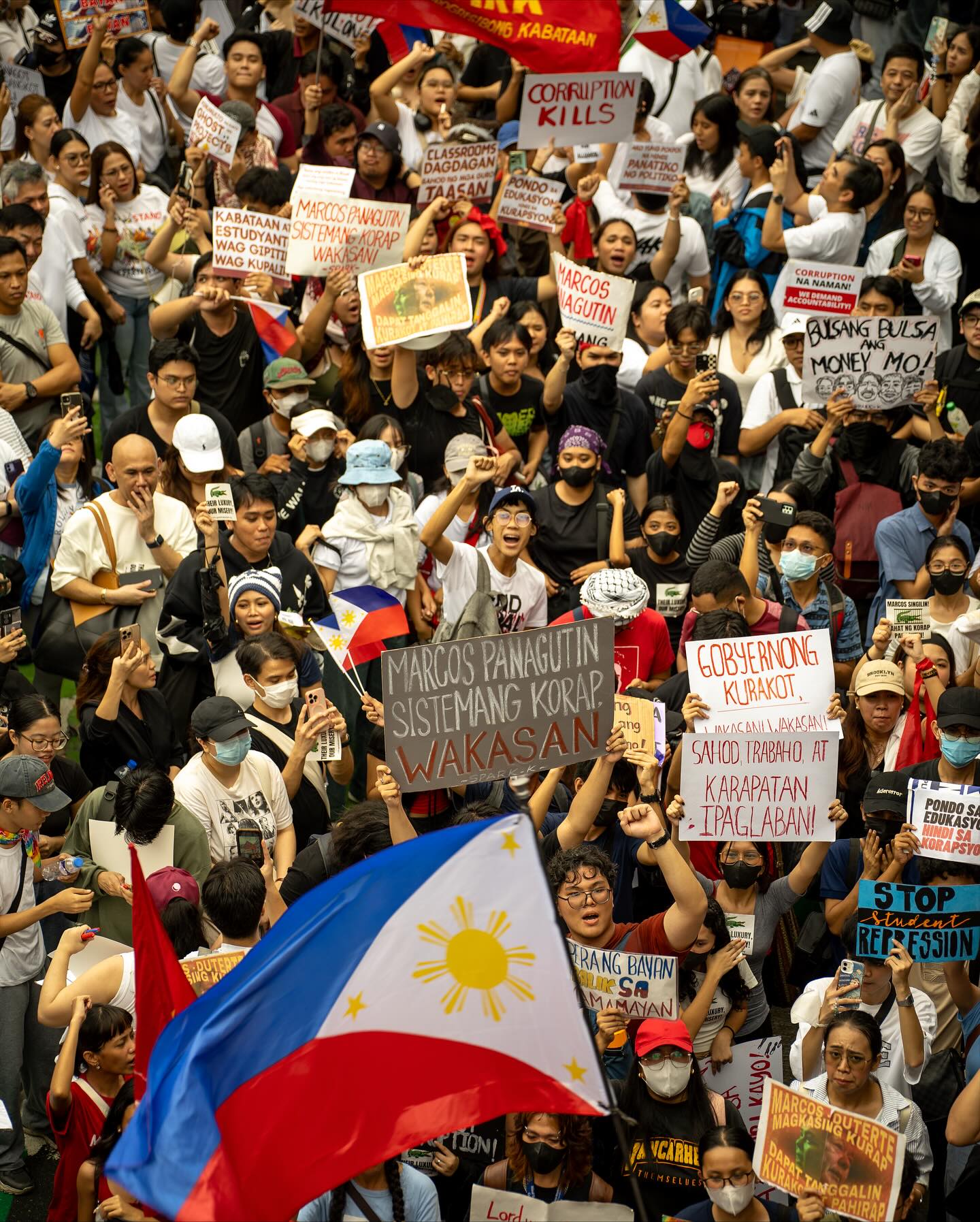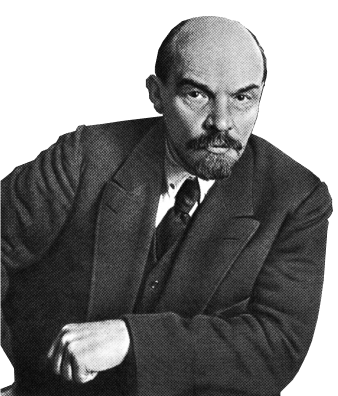
This article is the editorial for issue #19 of Communist Revolution. Subscribe here or order copy of the new issue in our store.
Lenin said that there are decades when nothing happens, and weeks when decades happen. The past few weeks certainly fall into the latter category.
Since the previous edition of this newspaper was published, a fantastic mass movement has erupted in Indonesia. Then another followed in Nepal, leading to similar scenes of angry crowds burning police stations and parliaments and chasing hated ministers from their lavish villas. Since then, the fire has spread, with uprisings in the Philippines and East Timor, and mass demonstrations in Morocco, Madagascar and Peru.
These spontaneous mass uprisings, developing at an incredibly rapid pace and led by the youth, have become characteristic of our era. Before Indonesia and Nepal, there were Serbia, Sri Lanka, Kenya, Bangladesh, Myanmar, Sudan, Chile, etc.
The spark that ignites these movements varies: in Indonesia, it was the exorbitant allowances paid to members of parliament; in Nepal, it was a social media ban. They are protesting against corruption among politicians and civil servants and demanding democratic rights.
All of these movements have a clear class content: the masses of workers, the poor, and unemployed young people are fed up with poverty and exploitation, while at the top of society the rich and politicians live in opulence.
Some could think that these events are particular to these poor countries, with no connection nor relevance to the situation here in North America.
But if we look deeper, similar events are being prepared here too. The historic crisis affecting the entire capitalist system is manifesting itself in varying ways and at varying speeds in different countries. But fundamentally, the same conditions that produced these revolutionary explosions in Asia exist in the United States and Canada.
This may seem strange to say when looking at the situation in the United States. Some on the left even believe that Trump’s election means that the United States is irrevocably sinking into fascism. But this is a simplistic view of things. Trump’s election itself was a grotesquely distorted expression of the same kind of class anger against the elites that drove the Indonesian and Nepalese masses to rise up.
Deep class divisions run through American society, and anger against billionaires is boiling over. It is in the political vacuum that exists on the left—the American left having foolishly attached itself to the Democratic establishment, the party par excellence of American billionaires—that Trump’s right-wing populism has found such fertile ground.
But the “orange man” of the White House is sitting on a volcano of discontent. Right-wing populism, which promises the moon to workers while actually serving billionaires, is fundamentally unstable. Trump’s popularity among millions of American workers was based on his promise of a new golden age, a return of good jobs, lower living costs, and an end to costly imperialist adventures—promises he hasn’t been able to keep and won’t be able to keep.
This is causing divisions within the Trump camp. In addition, a growing number of his supporters, including public figures such as Tucker Carlson and Candace Owens, are beginning to denounce him for his unwavering support for Israel and his refusal to reveal the names of the clients of pedophile pimp Jeffrey Epstein, which had been one of Trump’s promises. These MAGA zealots are being confronted with the reality that the US state ultimately serves the American capitalist class—a bunch of ultra-rich, sexually depraved Zionists.
The assassination of right-wing influencer Charlie Kirk temporarily plastered over the cracks in the MAGA camp by giving it a martyr around whom to unite. Trump seized the opportunity to launch an assault on anyone who criticizes him or Israel.
But this is a doomed attempt to divert attention from his own failures. The gravitational pull of classes will eventually prevail. The patience of millions of workers who have given him their support will eventually run out. When the dust settles, everyone will see that the emperor has no clothes.
The situation in Gaza also fuels radicalization. The Zionist state, increasingly desperate, is behaving like a rabid dog cornered against the wall. It hardly bothers to hide its genocidal and imperialist intentions anymore. It has launched its ground offensive against the Gaza Strip in an attempt to complete its ethnic cleansing.
Meanwhile, millions of people in the West are watching with horror as the massacre unfolds while their governments don’t lift a finger. The issue of Palestinian liberation acts as a lightning rod, channeling widespread anger against the capitalist status quo as a whole. Everyone can see that it is the same parties that adopt austerity measures and support Israel, the same billionaires who flaunt their sickening wealth and defend the genocide.
And this radicalization is beginning to take on dangerous proportions for the capitalist ruling class. In Italy, we saw the first strike in support of Palestine—a massive movement that shook the ruling class to its core. Mass demonstrations in response to Israel’s actions have also been seen in Spain, Holland, Australia, and Belgium.
Workers around the world should take inspiration from the Italians. To end the genocide, workers have the power to throw a wrench in the works of the Israeli war machine, whether it be workers in arms factories or dockers and truck drivers who have the power to stop the production and delivery of weapons—or the entire working class, which has the power to overthrow governments that support Israel.
It is certainly all of this that has forced a number of Western countries, including Canada, to recognize the Palestinian state—a cynical attempt to wash their hands of their complicity in genocide, in order to prevent radicalization at the bottom of society from above. Spain adopted an arms embargo on Israel under the same pressure.
In Canada and Quebec, the movement for Palestine is in a lull. On the surface, it may seem that the same kind of conditions that exist in Indonesia or the United States do not exist here, but early indications show signs that we are heading in the same direction.
All signs point to the country heading toward an economic crisis as a result of Trump’s tariffs. GAnd grappling with ever-growing public debt, the Carney government has promised deep budget cuts while drastically increasing the military budget. Tens of thousands of public sector jobs are on the chopping block. Already burdened by skyrocketing living costs, the housing crisis, and the collapse of social services, workers’ discontent can only grow.
We are already seeing signs of radicalization when we look at the union front. There is a tendency to overwhelmingly reject the tentative agreements proposed by union leadership, which shows the increasing disconnect between the union leaders and the ranks who are looking to fight. This was seen in the illegal strike by flight attendants in August, who rejected the tentative agreement proposed by their union leadership. It was also seen with teachers in Alberta. The strike launched by postal workers in response to Carney’s decision to end door-to-door delivery reveals the same combativeness.
If we want to see what the future holds for Canada, we can look to France. There too, the deep debt crisis is forcing the Macron government to try to adopt austerity measures to make workers pay the bill pass the bill on to workers. But, as a minority government, it is unable to obtain enough votes to implement its program—no other party wants the unpopularity that comes with austerity.
The result is that France is now on its third government since last summer. The patience of the masses is beginning to reach its limits. Two general strikes, under the slogan “Block everything,” took place this month, and another is called for October 2. The movement threatens to take on insurrectionary proportions.
Given that Carney’s government is in a minority position, it could find itself in the same deadlockimpasse, when other parties refuse to support its austerity.
This reflects the impasse of the capitalist system in crisis: the small capitalist minority at the head of society is trying to pull itself out of the economic crisis by shifting the burden onto the working class majority, but they are struggling to find political representatives to implement this unpopular program.
So the relative calm that reigns here will not last forever. Workers have enormous patience. They will try out different parties and different trends—after Carney, it may be Poilievre’s right-wing populism.
But their patience has limits. None of the capitalist parties have a solution to their problems, because the only solutions lie outside the framework of the capitalist system.
Sooner or later, the masses here will follow the path of Indonesia and Nepal. As the revolutionary Rosa Luxembourg said, before a revolution happens, it is perceived as impossible; after it happens, it is seen as having been inevitable
It is up to us to prepare ourselves so that a party is present and ready to offer the necessary revolutionary leadership when the explosion occurs here.

